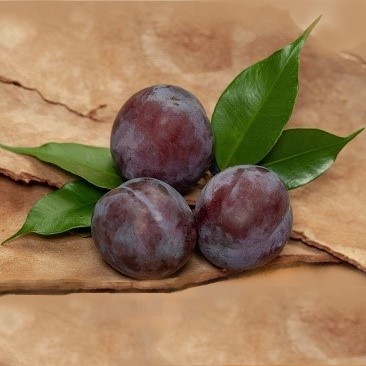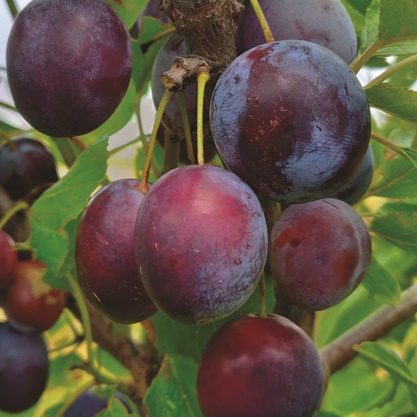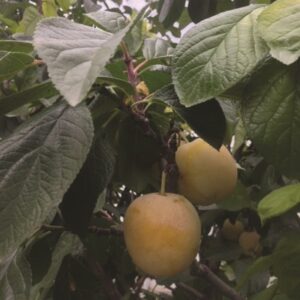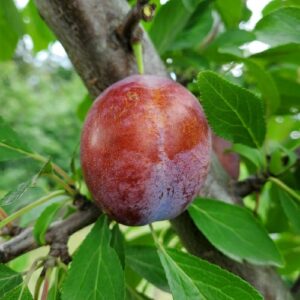European Plum : VICTORY Semi-Dwarf (Marianna 26-24) (Orchard Grade)
$42.95
An 'orchard grade' is a tree that may be somewhat shorter, slightly crooked, or a bit scratched, or for some other reason is not a perfect front lawn specimen. These trees will work just as well in an orchard as a first or number one would, since they still produce the very same fruit.
Dr. Gus Tehrani's research program at Vineland, ON has developed a number of promising European type plums. Victory, in particular, has gained a following since being released in 1992. It is a cross of Vision and Valor- two earlier Vineland varieties that are still being planted commercially. Large, attractive, heart-shaped fruit is very dark violet-blue with exceptionally high quality, firm greenish-yellow flesh. Not only is it ideal for canning and drying-several prominent plum personalities, including Bob Purvis and Dr. Jim Cummins, count Victory as one of their favorite fresh eating fruits. The tree is late-blooming, precocious, and productive.
NEEDS A POLLENIZER | ZONE 4/5 | LATE SEPT-EARLY OCT
Rootstocks
G41 Dwarf
G935 Small Semi-Dwarf
G969 Small Semi-Dwarf
G30 Semi-Dwarf
G890 Semi-Dwarf
Pollenator definitions
NEEDS A POLLENIZER ̶ means another tree of the same type or kind but a different variety must be blooming nearby at the same time.
EXAMPLE A Liberty apple and a Wealthy apple can cross-pollinate. Two trees of the same variety ie: ̶ 2 Wealthy apples, cannot cross pollinate because they are genetically identical.
Other trees are marked as SEMI-FERTILE. These will set fruit without a second tree. However they will often bear more, and sometimes larger fruit if another variety of the same kind of tree is nearby.
You can select 2 different trees of the same kind marked as NEEDS A POLLENIZER or plant one of those along with one SELF-FERTILE or one SEMI-FERTILE. Also consider ripening times ̶ a Goldrush apple might not start blooming before a Pristine is finished.








